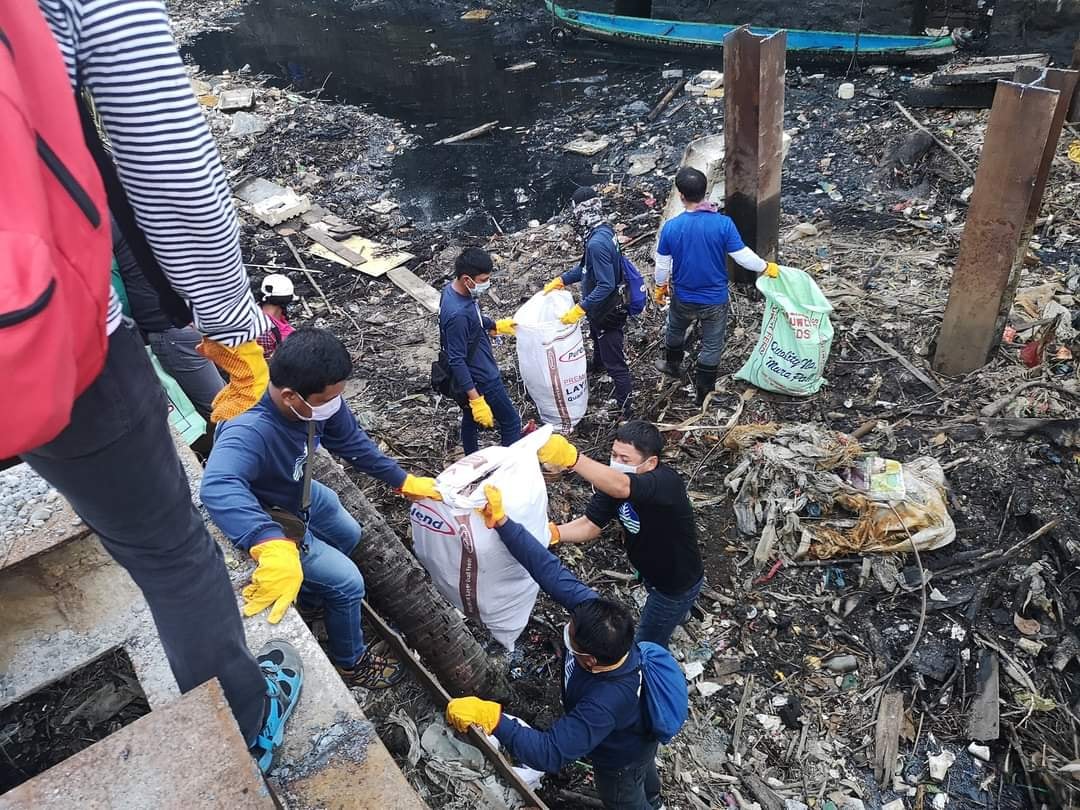
Volunteers pick up trash found on the Meycauayan River in Bulacan. (Photo courtesy of DENR)
CITY OF SAN FERNANDO—Around 23,000 tons or 23 million kilos of solid wastes have been recovered from the river tributaries in Central Luzon in the last eight months preventing garbage from reaching Manila Bay, an official of the Department of Environment and Natural Resources (DENR) said Monday, Aug. 23.
The volume of wastes collected was 17 times bigger than the 1,400 tons hauled in 2019, according to Paquito Moreno Jr., DENR regional executive director, in a statement posted on the agency’s website.
In a phone interview, Moreno said the wastes were segregated, and those that could not be reused were brought to landfills. The decaying wastes were composted as soil conditioners for bamboo river bank planting, he added.
The Supreme Court ordered in 2008 the cleanup and rehabilitation of Manila Bay by 13 agencies. The goal was to restore and maintain the water fit for swimming.
For 2021, the regional DENR mobilized volunteers for the manual removal of wastes, helped local governments install 125 trash traps, deployed 420 canal cleaners, and sent machines to remove wastes that settled at the bottom of rivers.
Moreno appealed to residents to segregate solid wastes at home and avoid single-use plastics. He said these efforts would help reduce the garbage generated daily.
The DENR said the Manila Bay Area covers eight provinces and 178 local governments in Metro Manila, Central Luzon, and Southern Luzon. Manila Bay spans 199,400 hectares, with 190 kilometers of coastlines.
The 17 principal river systems draining to Manila Bay are in Angat, Bocaue, Sta. Maria,, Marilao, Meycauayan, Valenzuela, Pasig,Parañaque, Imus, Ylang-ylang, Rio Grande, Cañas, Obando, Navotas-Malabon-Tinajeros-Tullahan River, Talisay River, Guagua River, and Pampanga River.